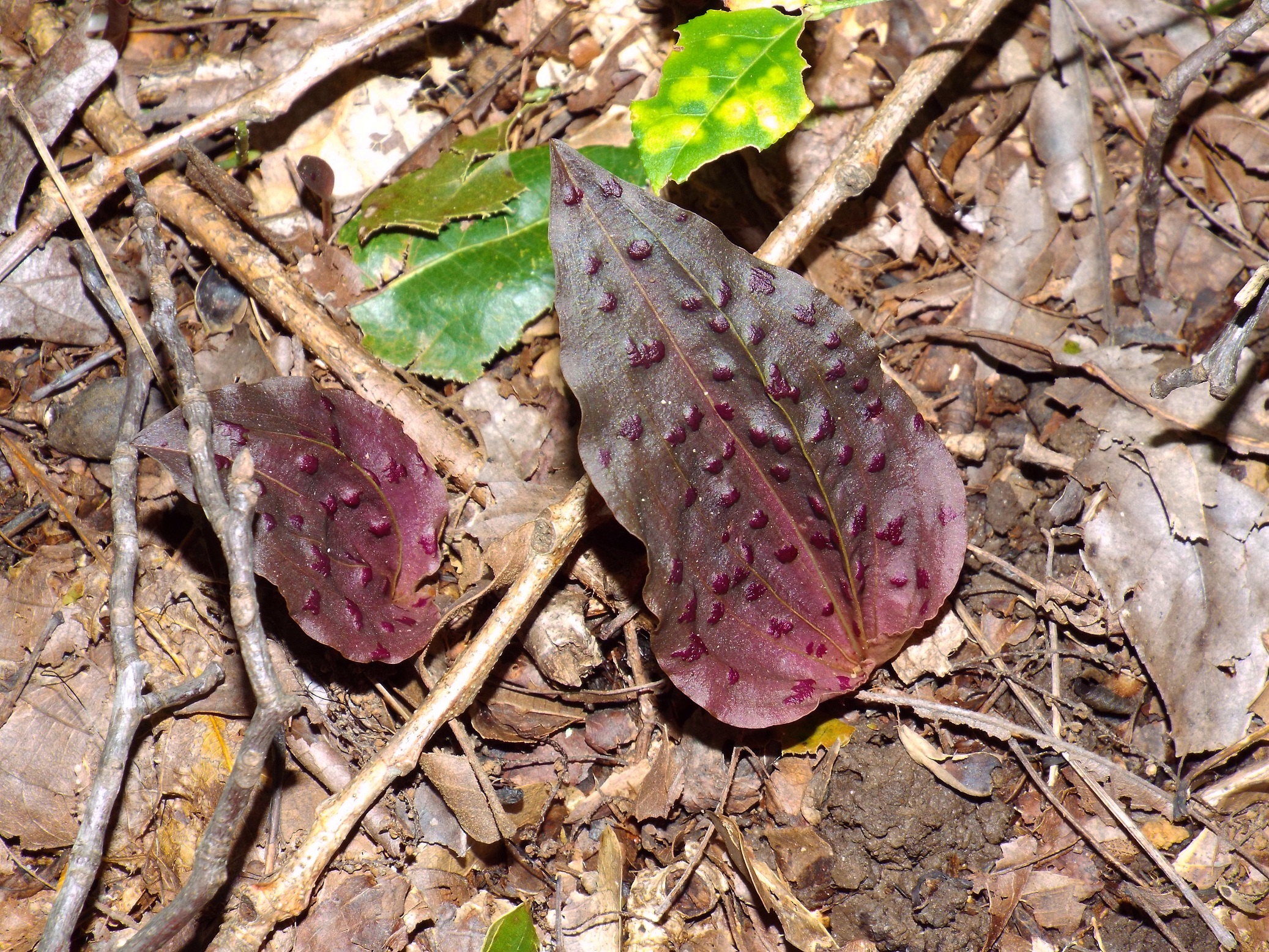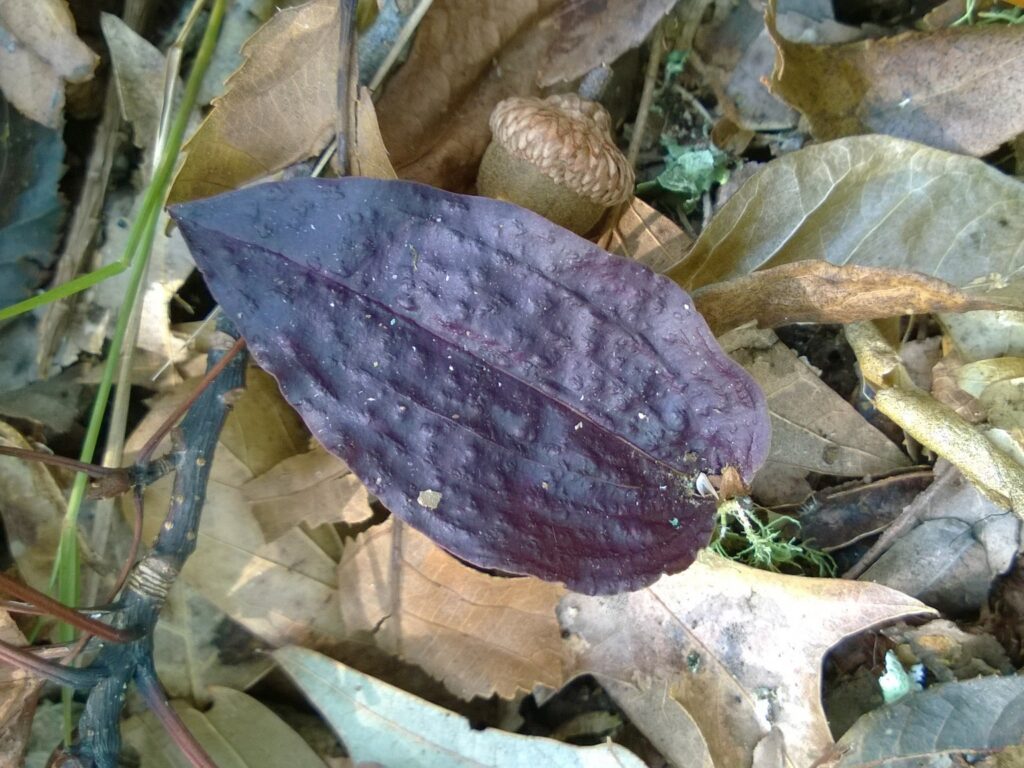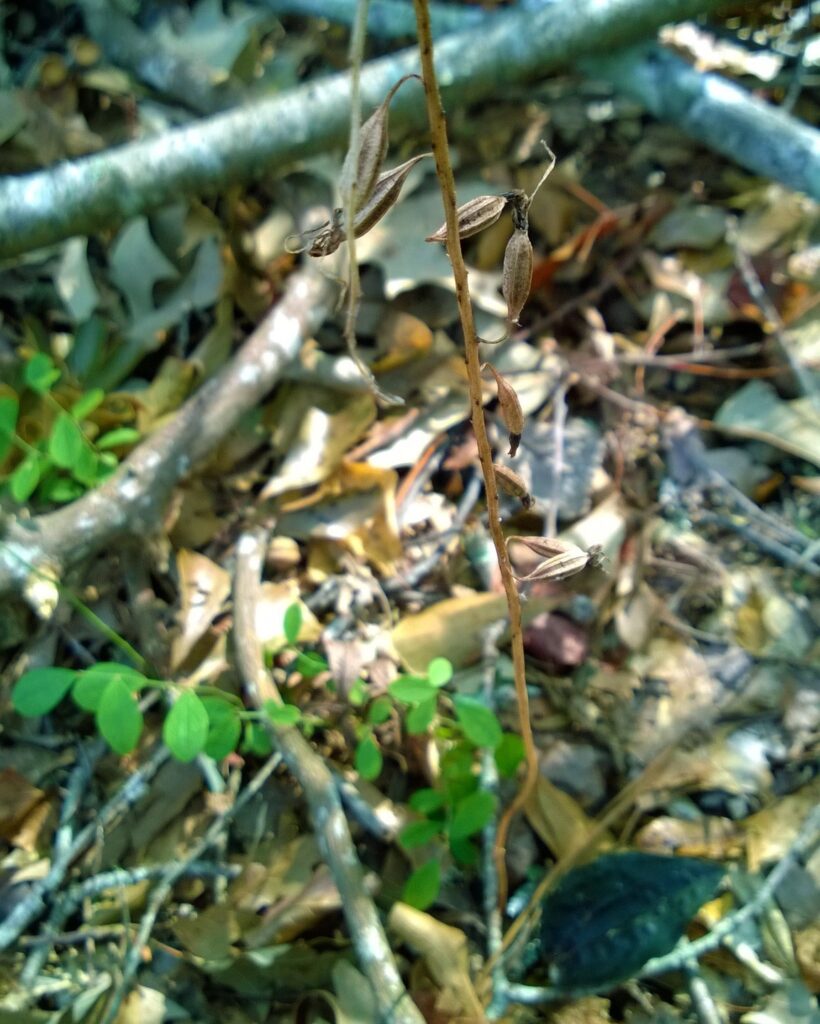


This week for Flora and Fauna Friday we have a common woodland Orchid most easily spotted by its evergreen winter foliage, Cranefly Orchid (Tipularia discolor).
Cranefly Orchid is a native Orchid found often across South Carolina where it grows on rich and moist forested upland soils. They are perennial and grow below the soil with spreading corms to form small stands of plants. These corms are edible but neither substantial nor particularly flavorful. Cranefly Orchids bloom in midsummer producing a foot and half tall stalk of flowers. This flower stalk is sparsely populated by five-petalled, cream-white, lanky and downturned blossoms. The flowers are named for their Cranefly-esque traits. (Craneflies, AKA Skeeter-Eaters, are large scrawny flies that superficially resemble giant Mosquitoes. More on them at a later date.) The flowers are pollinated by moths and mature into small urn-like seed pods. These tiny pods are filled with thousands of spore-like, nearly microscopic seeds. These nigh weightless seeds are dispersed by wind. The flower stalks dry and can remain through winter.
Cranefly Orchids are unique for their leaves. The leaves emerge in fall, persist through winter, and wither away before the plant blooms. A single leaf is produced per corm. The physical appearance of the leaf is unique as well. The leaves are teardrop shaped, roughly three inches long, and lay atop the leaf litter on the forest floor. They have parallel veins and often a bumpy appearance. The upper surface of the leaf is a dark green and its bumps are sometimes accented by amethyst spots. The underside of the leaf, by contrast, is a rich royal-purple and usually shiny. The purpose of this pigmentation is not fully understood. One hypothesis suspects the purple helps absorb the sparse winter light and infrared radiation from the soil to protect the frigid leaf from sun damage and heat the leaf to improve photosynthesis efficiency. Regardless, the Cranefly Orchid has found an interesting niche in our forest ecosystems. Rather that compete for light between the shadows of the summer canopy, it simply waits until winter and stores energy for the following summer.